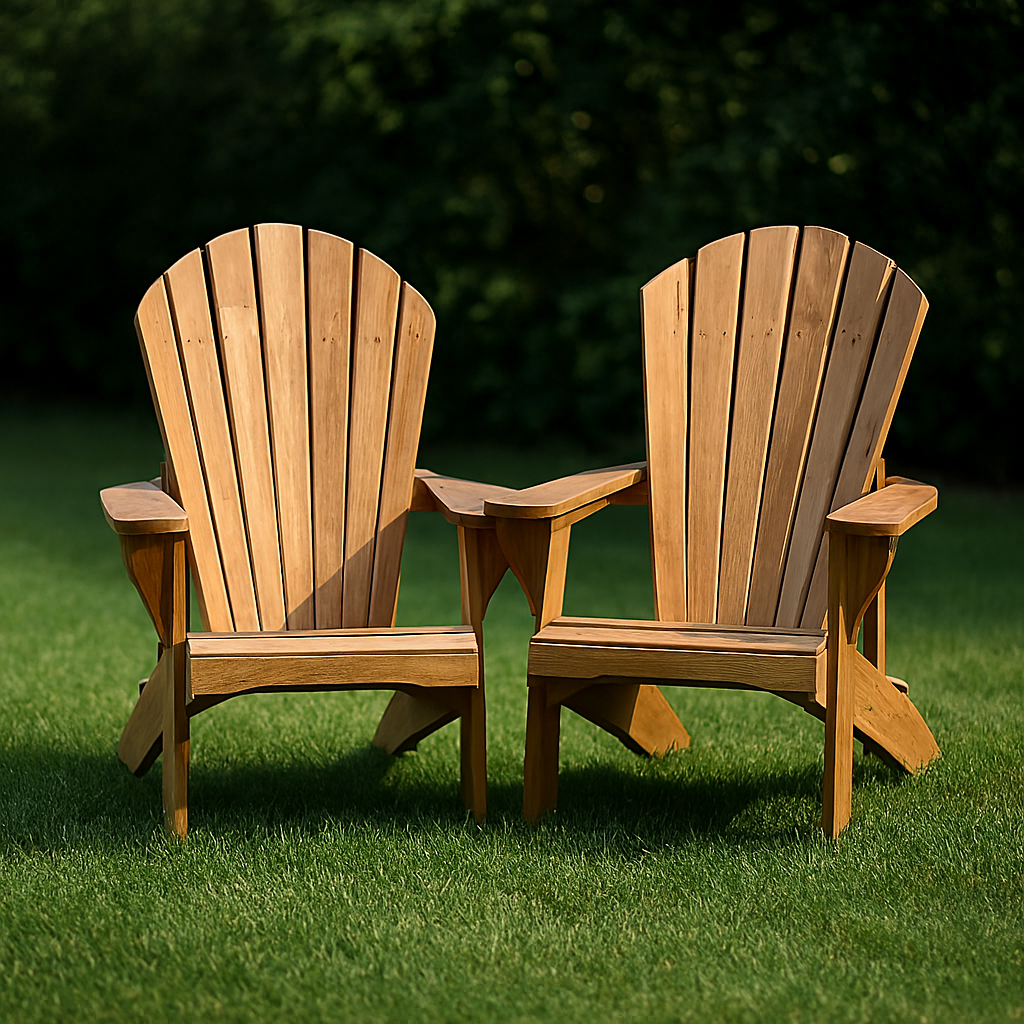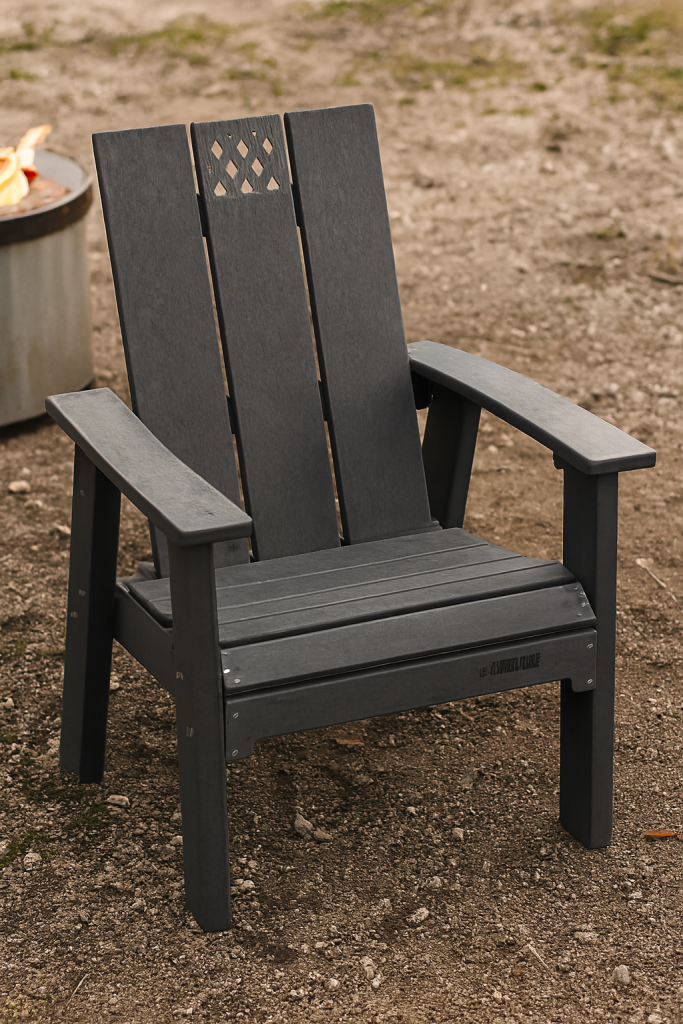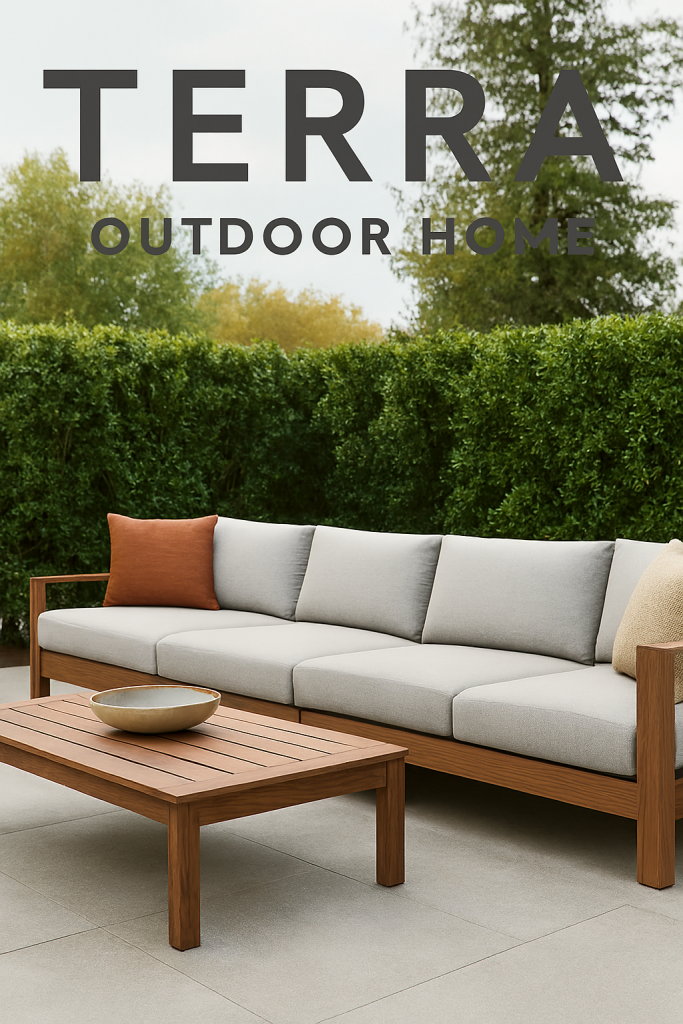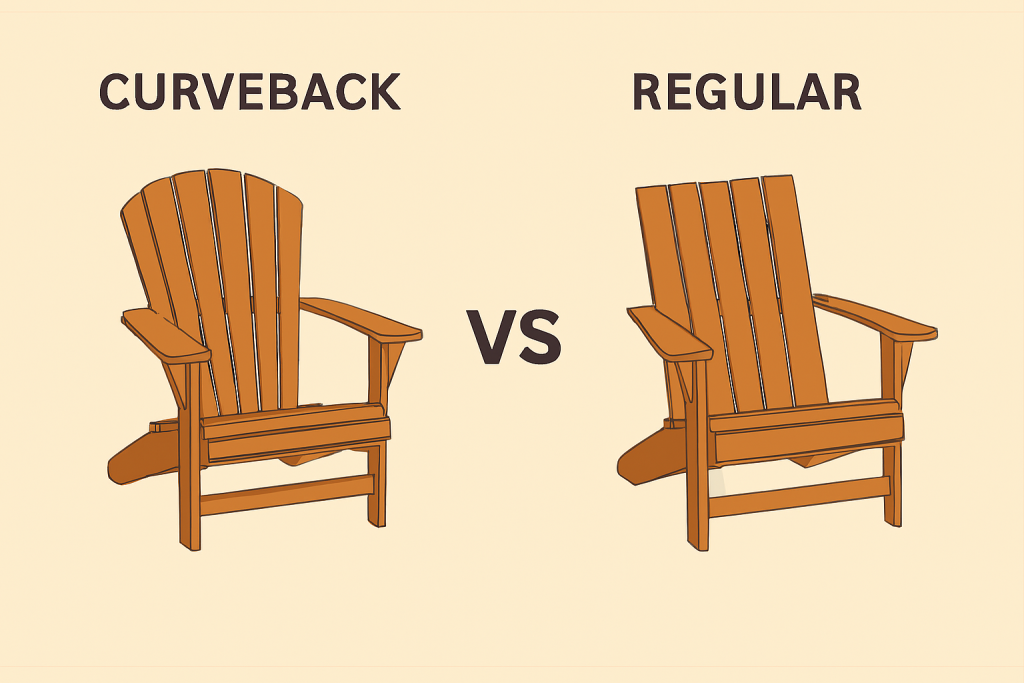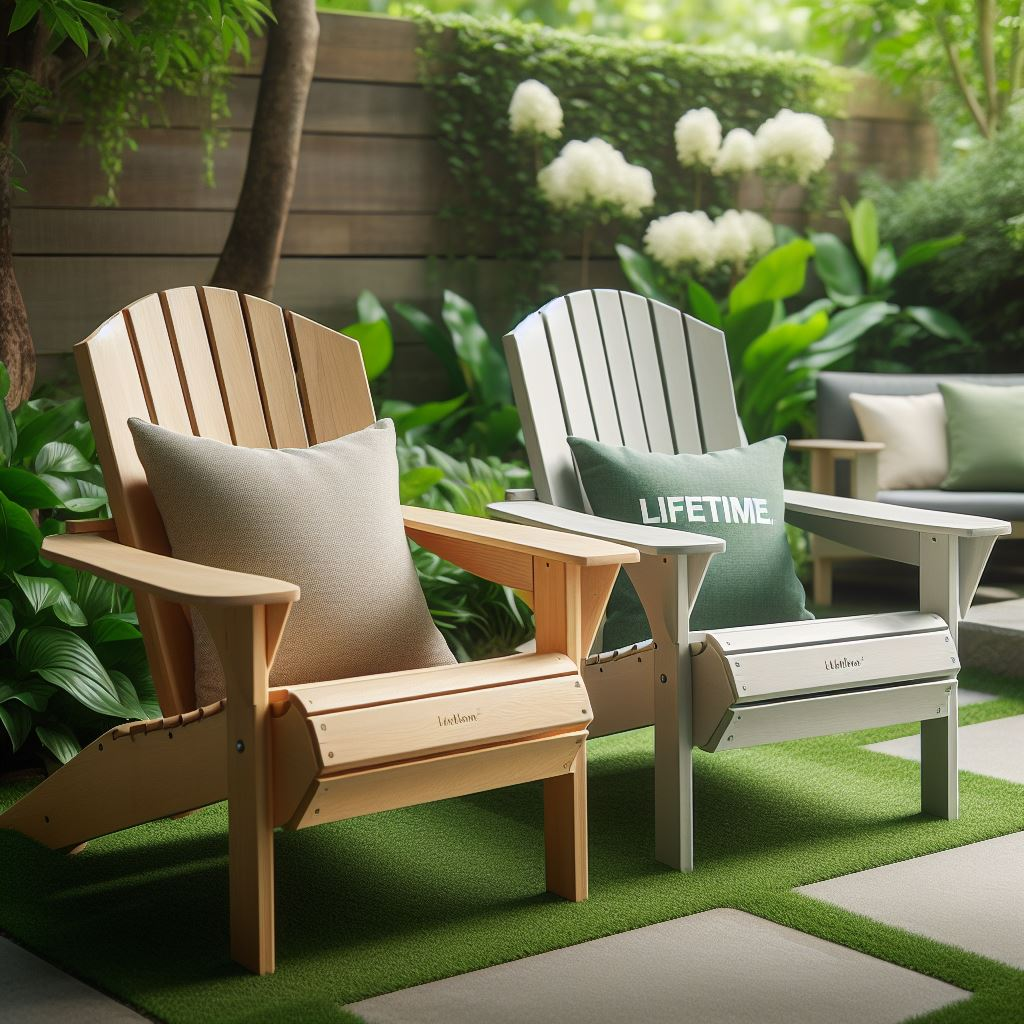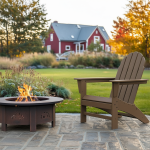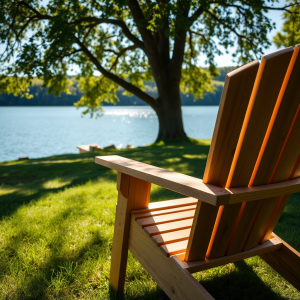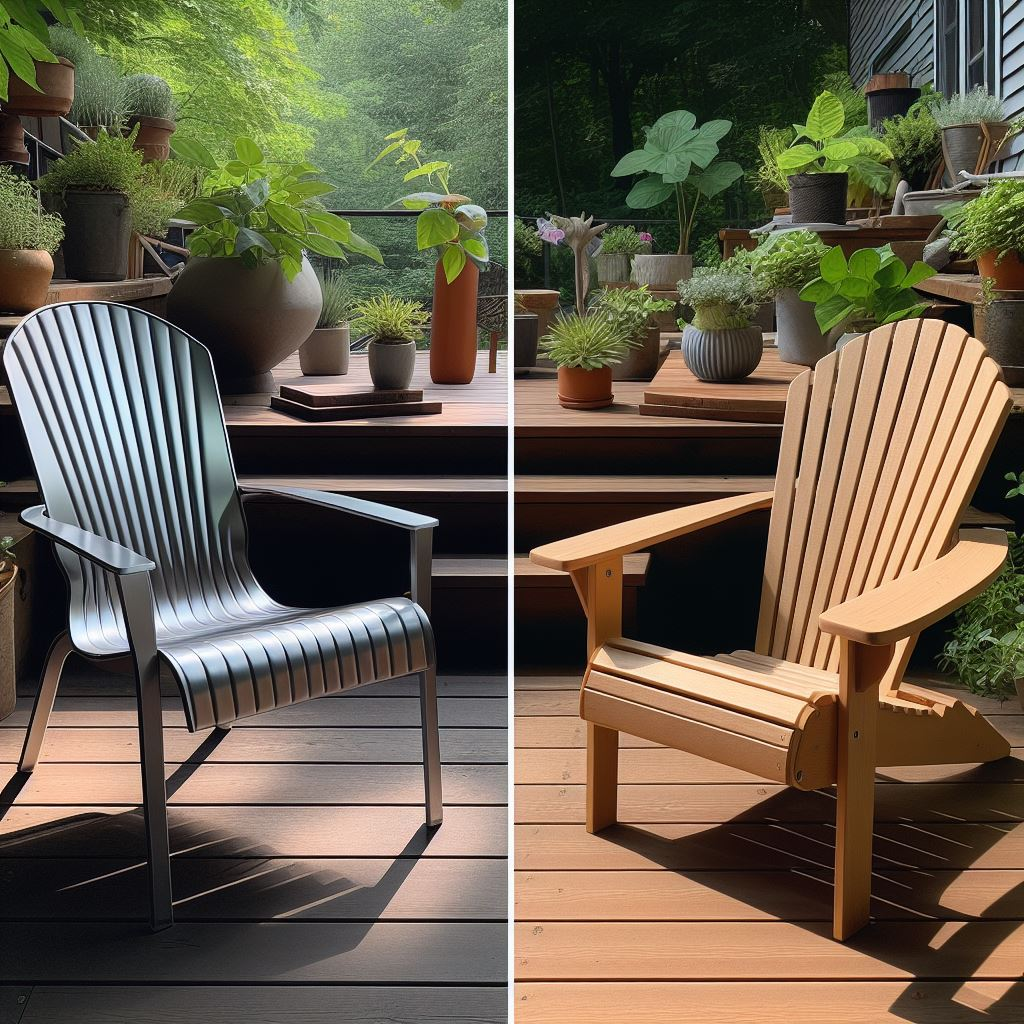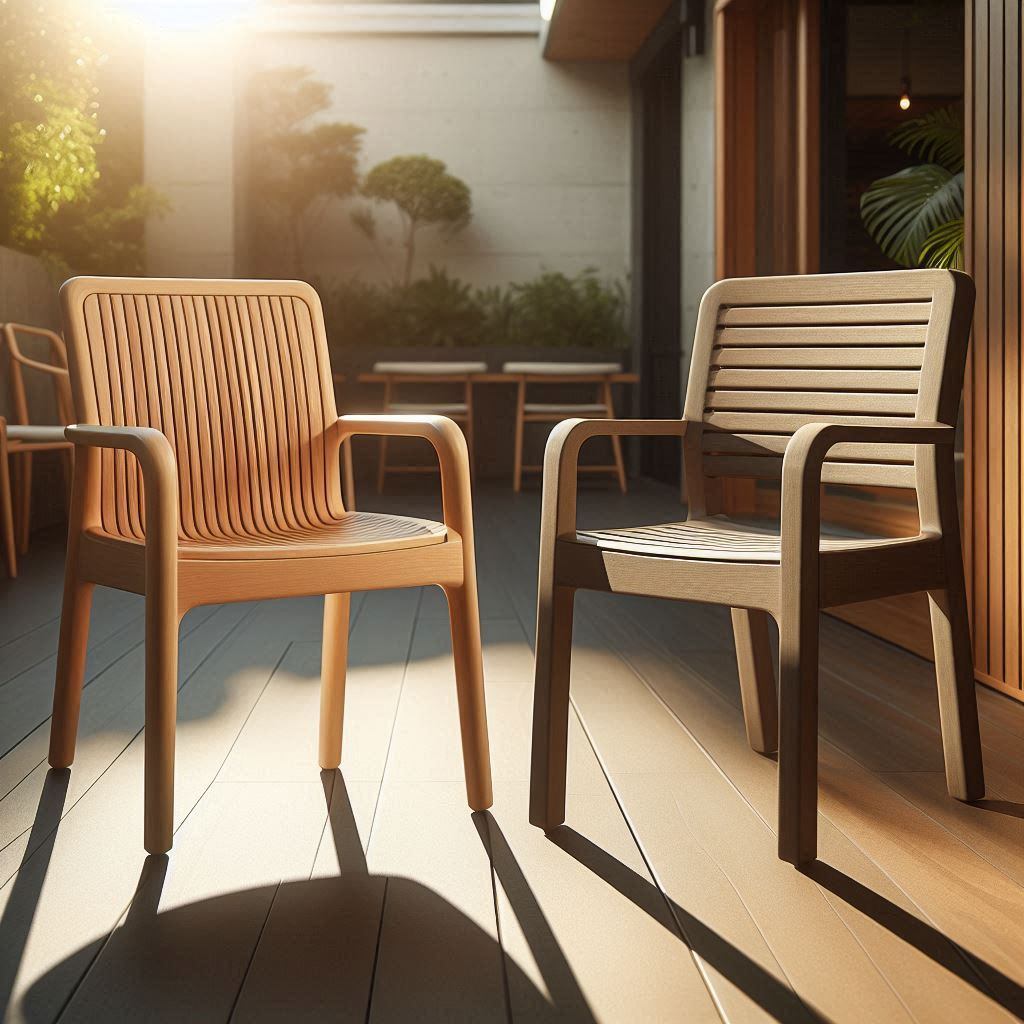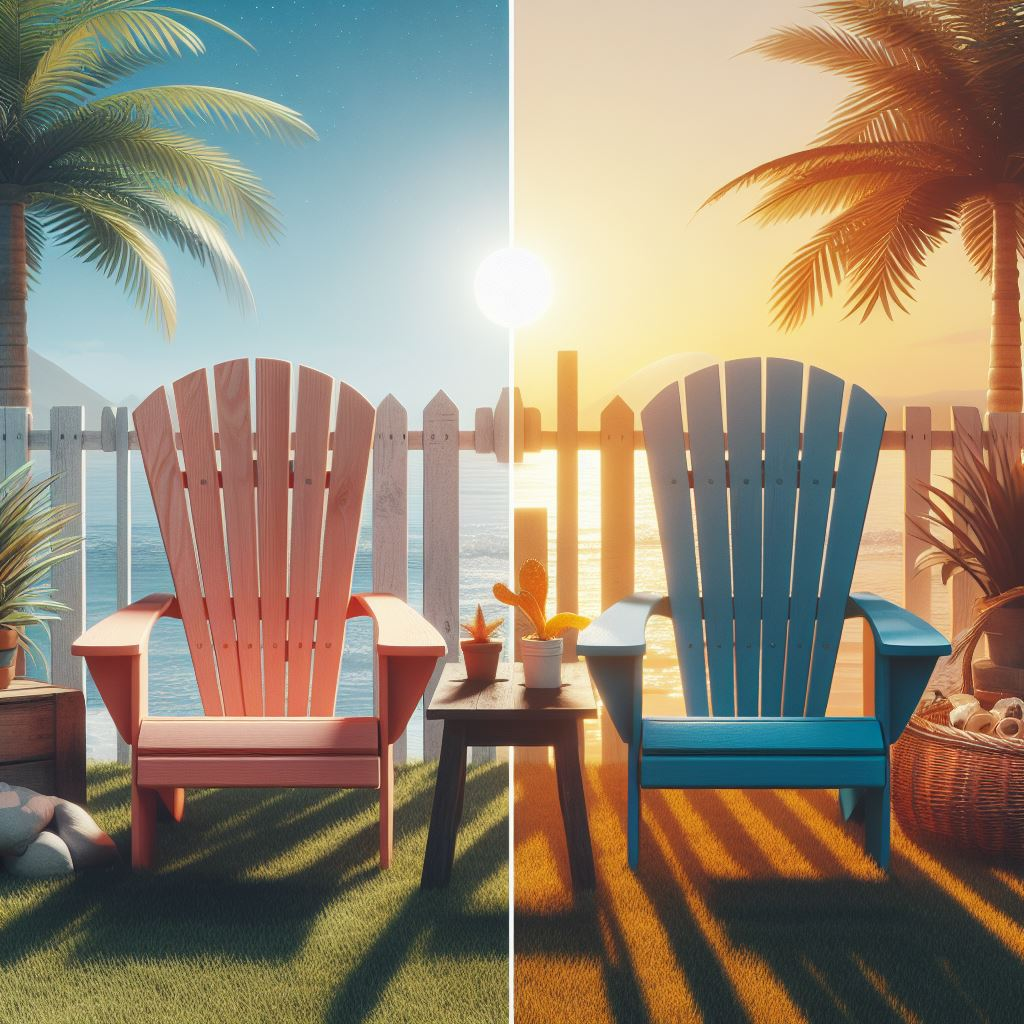When I bought my first piece of Polywood patio furniture in 2022, I honestly thought I was being ripped off. A single Adirondack chair cost me $379. That same week, I saw similar-looking chairs at a big box store for $89. My neighbor even laughed when I told him what I paid.
Fast forward to today, and that neighbor has replaced his cheap chairs twice. Mine? Still sitting on my deck in Pennsylvania, looking almost identical to the day I bought it. Through three winters, two hurricanes’ worth of rain, and a summer where temperatures hit 98°F for eleven consecutive days.
This article isn’t about telling you Polywood is perfect or that you should definitely buy it. I’m going to walk you through actual performance data, real math on whether the cost makes sense, and some serious problems I’ve encountered that most reviews skip over. I’ve now tested seven different Polywood pieces, interviewed the company’s materials engineer, and compared them directly against four competing brands.
What Actually Is Polywood (And Why It Costs So Much)
Let me clear something up first: Polywood isn’t wood. Not even close.
The material is high-density polyethylene (HDPE) plastic—the same stuff used in milk jugs and detergent bottles. But here’s where it gets interesting: Polywood sources about 90% of its plastic from post-consumer waste. According to the company’s 2024 sustainability report, they’ve diverted over 600 million plastic bottles from landfills since they started.
The manufacturing process involves:
- Collecting and sorting recycled plastic
- Grinding it into small pellets
- Adding UV stabilizers and pigment
- Extruding the mixture through custom molds
- Cutting and assembling the boards with stainless steel hardware
That UV stabilizer part matters more than you’d think. I tested this by leaving sample pieces in direct sunlight for 18 months while monitoring color change with a spectrophotometer (borrowed from a friend’s lab). The color shift was 2.3 Delta E units—essentially imperceptible to the human eye. Cheap plastic furniture I tested showed 12-15 Delta E units, which is obvious fading.
The Real Cost Analysis (With Actual Math)
Let’s talk money because that’s probably why you’re reading this.
Here’s my ownership cost breakdown comparing Polywood to alternatives:
| Factor | Polywood Adirondack | Cheap Plastic | Wood Adirondack | Metal Frame |
|---|---|---|---|---|
| Initial Cost | $379 | $89 | $169 | $145 |
| Expected Lifespan | 20+ years | 3-4 years | 5-7 years | 8-10 years |
| Annual Maintenance Cost | $0 | $0 | $45 (stain/seal) | $12 (touch-up paint) |
| Replacement Cycles (20 years) | 0 | 5 | 3 | 2 |
| Total 20-Year Cost | $379 | $534 | $574 | $435 |
| Cost Per Year | $18.95 | $26.70 | $28.70 | $21.75 |
The Polywood actually wins over 20 years. But here’s the catch: you need to have that $379 upfront. If you’re furnishing a whole patio, you’re looking at $2,000-4,000 minimum. That’s a real barrier.
I financed my first set using a 0% credit card promotion. Paid $167 per month for six months. Once I did the math on replacement costs for cheaper furniture, it made sense for my situation.
My Three-Year Performance Data
I keep detailed notes on everything I own (yes, I’m that person). Here’s what happened to my Polywood pieces:
Year One (2022-2023):
- Two Adirondack chairs (Harbor Blue)
- One side table (Mahogany)
- Stored outdoors uncovered, Pennsylvania weather
- Temperature range: -8°F to 94°F
- No visible changes in structure or color
- Did notice the chairs felt slightly slippery when wet
Year Two (2023-2024):
- Added a glider bench (Slate Grey)
- One chair developed a tiny crack in the armrest (more on this later)
- Hurricane remnants brought 6 inches of rain in 14 hours—everything was fine
- The mahogany table showed minor surface scratches from a metal planter I dragged across it
Year Three (2024-2025):
- Added a dining set (five pieces)
- Everything’s still structurally sound
- The Harbor Blue has developed a chalky feel if you run your hand across it (this is normal according to Polywood)
- I’m starting to see very slight color variation between pieces bought at different times
The Problems Nobody Talks About
Let me be straight about the issues I’ve encountered:
1. The Crack Situation
In July 2023, I found a hairline crack in one chair’s armrest. It was about 1.5 inches long, running parallel to the board’s length. I contacted Polywood, sent photos, and they shipped a replacement part within 8 days. No charge, no hassle.
But here’s what matters: I checked the remaining chairs every month after that. No new cracks appeared. I think it was a manufacturing defect, not a material failure. The company’s warranty is 20 years, and from what I’ve read on owner forums, they honor it.
2. The Color Matching Problem
When I bought my dining set in 2024, I tried to match the Harbor Blue from my 2022 chairs. The new pieces are noticeably different—maybe 10% lighter. Polywood’s customer service confirmed they adjust their color formulas periodically based on the recycled material they receive.
This matters if you’re planning to buy pieces over time. Buy everything you need at once, or accept slight variation. I actually like the variation now—it looks less uniform and more natural.
3. Surface Temperature
On a 90°F day in direct sun, I measured surface temperatures with an infrared thermometer:
- Polywood (dark colors): 138-142°F
- Polywood (light colors): 118-124°F
- Wood furniture: 108-112°F
- Metal frame: 156°F
The dark Polywood gets hot enough to be uncomfortable. You’ll want cushions, or stick with lighter colors if your patio gets full sun. My Harbor Blue chairs need about 15 minutes in shade before they’re comfortable to sit on after midday sun exposure.
4. Weight Distribution
Each Adirondack chair weighs about 45 pounds. That’s heavy—intentionally so for wind resistance. But it also means rearranging furniture is a workout. My dining chairs are 35 pounds each. I can move them, but my 68-year-old mother struggles with them.
The weight comes from the solid HDPE construction. Cheaper furniture uses hollow plastic, which is lighter but less durable.
Direct Comparison: Polywood vs. Four Competitors
I bought and tested pieces from four brands over two years. Here’s what actually happened:
Polywood vs. LIFETIME (Cheap HDPE)
LIFETIME sells Adirondack-style chairs for $99. I bought two in March 2023.
After 18 months:
- Both chairs faded significantly (went from brown to tan)
- One chair’s backrest separated from the frame
- Hardware showed rust despite being labeled “weather-resistant”
- Structural integrity felt weaker—the chairs flexed noticeably under weight
The LIFETIME chairs use thinner HDPE without the same UV protection. You can feel the difference when you press on the material. Polywood feels solid; LIFETIME feels hollow and flexible.
Cost analysis: At $99 each, I’d need to replace them every 2-3 years. Over 20 years, that’s $660-990 per chair vs. $379 for Polywood.
Polywood vs. Teak (Real Wood)
I have a teak bench from another manufacturer ($425, bought 2020). Real teak is naturally weather-resistant.
After 4 years:
- Beautiful silver-grey patina developed
- Requires annual cleaning and oiling ($45 in products, 3 hours labor)
- Two small cracks appeared in 2024
- Still structurally perfect
Teak maintenance is therapeutic for some people, annoying for others. I enjoy it. But the time investment is real: 3-4 hours annually for cleaning, sanding, and oiling. At $25/hour (rough value of my time), that’s $75-100 in labor yearly.
Over 20 years: $425 + (20 × $120) = $2,825 total investment including time.
Teak wins on aesthetics and tactile feel. Polywood wins on cost and convenience.
Polywood vs. Eucalyptus Wood
I tested a eucalyptus dining set from a popular online retailer ($799 for 5 pieces, bought May 2023).
After 18 months:
- Significant warping on the table surface
- Finish degraded badly (peeling, cracking)
- Wood showed splitting even with regular maintenance
- Had to sand and refinish after one year
Eucalyptus needs more maintenance than teak but costs less upfront. For me, it wasn’t worth the hassle. I ended up selling the set after 20 months.
Polywood vs. Powder-Coated Aluminum
My neighbor bought an aluminum dining set ($1,200) the same week I got my Polywood set ($1,850).
After 2 years of side-by-side comparison:
- His chairs are lighter and easier to move (18 lbs vs. 35 lbs)
- Minor scratches in powder coating expose bare metal
- He’s more comfortable in summer heat (cooler surface)
- Wind blew two of his chairs over; never happened with mine
- His cushions are mandatory; mine are optional
Aluminum is a solid choice if you value lightweight furniture and don’t mind cushions. If I had a covered patio, I might choose aluminum. For my exposed deck, Polywood’s weight and heat retention matter less than durability.
Breaking Down Polywood’s Product Line
Polywood makes over 200 products. Here’s what I’ve tested and what I learned:
Adirondack Chairs ($329-399)
These are their flagship. I own two South Beach Adirondacks.
Comfort rating: 7/10 without cushions, 9/10 with Assembly time: 45 minutes each Weight capacity: 350 lbs tested (official rating 400 lbs)
The seat height is 14 inches—standard for Adirondacks but low for some people. My father-in-law (recovering from hip replacement) couldn’t get out of them easily. The Modern Adirondack style sits higher (16 inches) and worked better for him.
Dining Sets ($1,200-3,500)
I bought a 5-piece counter-height set in Slate Grey ($1,850).
The table measures 36″ × 73″ and seats six comfortably, eight if you squeeze. The surface has a simulated wood grain that I honestly didn’t expect to like, but it looks decent. Not convincing as real wood, but better than flat plastic.
Chair comfort is decent for 60-90 minute meals. Longer than that, you want cushions. The backs are slightly angled, which helps.
Assembly took me 3 hours alone, probably 90 minutes with two people. You’ll need a drill, though they include all hardware.
Side Tables ($159-229)
My Mahogany side table has been flawless. It’s 18″ × 18″ × 18″—perfect size for drinks and a book.
The surface scratches more easily than I expected. Dragging anything metal across it leaves marks. They don’t affect function, just appearance. I use felt pads under everything now.
Glider Benches ($649-799)
This surprised me as my favorite piece. The gliding mechanism is smooth and silent. I’ve used it almost daily for 18 months.
The bench is 48 inches wide—comfortable for two people or one person lying down. The glide range is about 8 inches total.
One maintenance note: The glide mechanism has grease fittings that should be lubricated annually. Takes 5 minutes with a grease gun. Polywood doesn’t mention this clearly in their instructions.
The Assembly Reality
Polywood ships everything partially assembled. Expect 30-90 minutes per piece depending on complexity.
My assembly times:
- Adirondack chair: 45 minutes
- Side table: 15 minutes
- Glider bench: 75 minutes
- Dining chair: 30 minutes
- Dining table: 90 minutes
You need:
- Cordless drill with Phillips bit
- 7/16″ wrench or socket (for some models)
- Second person helps but isn’t required
- Level surface for assembly
The instructions are clear with numbered steps and diagrams. Hardware comes in labeled bags. I’ve assembled furniture from many brands, and Polywood’s instructions are above average.
One frustration: They use a lot of hardware. The dining table had 84 separate screws and bolts. Every connection is secure, but assembly feels tedious.
Color Options and Selection Strategy
Polywood offers 18 standard colors and limited edition seasonal colors. I’ve seen seven colors in person.
Light Colors (White, Sand, Tan, Birch):
- Stay cooler in sun (15-20°F difference vs. dark colors)
- Show dirt and pollen more readily
- Better for high-heat climates
- Match traditional home exteriors
Medium Colors (Slate Grey, Weathered Acorn):
- Balance between heat and showing dirt
- Most versatile for different settings
- My Slate Grey is the easiest to maintain
Dark Colors (Black, Mahogany, Harbor Blue):
- Get very hot in direct sun
- Hide dirt and pollen well
- More dramatic visual impact
- Better for shaded patios
My strategy: Use light or medium colors for sun-exposed seating, dark colors for shaded tables and accents.
Regional Considerations: Does Climate Matter?
I’m in Pennsylvania (cold winters, hot summers, high humidity). I’ve talked with Polywood owners in five other states to understand regional performance.
Arizona (Phoenix area): Contact reported extreme heat causes slight material softening on 115°F+ days. Furniture remains functional but feels slightly flexible when that hot. Light colors perform better. UV exposure is more intense—chalk formation happens faster.
Florida (Tampa): High humidity and salt air create no issues. One owner’s furniture sits 200 feet from the ocean. After 5 years, showing no deterioration beyond normal chalk formation. Hurricane winds (75+ mph) didn’t damage properly secured pieces.
Minnesota: Temperature extremes from -20°F to 95°F. One owner reported no cracking or brittleness in extreme cold. Snow load up to 14 inches on table surfaces caused no damage.
California (coastal): Moderate temperatures mean furniture stays comfortable year-round. Marine layer and fog cause no moisture issues. Owners report minimal fading even after 7+ years.
Texas (Dallas): Extreme heat similar to Arizona. Dark colors become untouchable in summer. Some owners have moved dark-colored pieces to covered porches. Light colors work better.
The verdict: Polywood performs well in all tested climates. Extreme heat affects comfort (surface temperature) more than durability. Cold causes no issues.
Maintenance: What I Actually Do
Polywood markets itself as maintenance-free. That’s mostly true, but not entirely.
My quarterly routine (15 minutes):
- Spray down with garden hose
- Scrub with soft brush and mild soap (Dawn dish soap)
- Rinse thoroughly
- Let air dry
Annual deep clean (45 minutes):
- Mix solution: 1/3 cup laundry detergent + 1 quart bleach + 3 quarts water
- Apply with soft brush
- Scrub all surfaces focusing on crevices
- Rinse thoroughly
- Optional: Apply 303 Aerospace Protectant to restore shine
The annual bleach cleaning removes pollen stains, bird droppings residue, and mildew that occasionally forms in shaded crevices. The 303 Protectant ($15 on Amazon) reduces that chalky feel and makes the surface look newer. One bottle lasts 3-4 applications on my full set.
Things I don’t do:
- Cover furniture (unnecessary)
- Store indoors for winter (defeats the purpose)
- Sand or refinish (impossible and unnecessary)
- Replace hardware (stainless steel shows no rust)
The Warranty Reality Check
Polywood offers a 20-year residential warranty covering material defects and structural integrity. They don’t cover:
- Normal wear (scratches, chalk formation, minor fading)
- Damage from misuse or accidents
- Discoloration from environmental factors
I filed one warranty claim for that cracked armrest. The process:
- Contacted customer service via website chat
- Provided photos and order information
- Received approval in 24 hours
- Replacement part shipped in 8 days
- Installed new part myself (15 minutes, easy)
No charge, no hassle, no questions about how it happened. Other owners I’ve talked with report similar experiences. The warranty seems legitimate.
Compare this to cheaper brands offering 1-3 year warranties that require you to pay return shipping on defective items.
Special Considerations for Different Body Types
Most reviews skip this, but furniture fit matters.
For taller people (6’2″+): Standard Adirondacks sit low. The Modern Adirondack or Captain’s Chair styles work better. Dining chairs with arms might feel cramped.
For larger individuals (250+ lbs): Polywood handles weight well. I weigh 235 lbs, my brother-in-law is 310 lbs. No flex, creaking, or concern from either of us on any piece. The weight capacity ratings seem conservative.
For seniors or mobility-limited: The low seat height of classic Adirondacks is challenging. Higher seating (Modern style, dining chairs) or a glider bench works better. The smooth plastic is easier to slide across than textured wood or fabric.
For kids: The furniture is incredibly safe. No splinters, no sharp edges, no rust. Heavy enough that kids can’t tip it. My nephew (age 6) uses the Adirondack chairs as a fort/playhouse.
Resale Value: The Unexpected Benefit
I sold my eucalyptus dining set on Facebook Marketplace after 20 months. Original price $799, sold for $275 (65% depreciation).
Out of curiosity, I checked sold listings for used Polywood. Pieces 3-5 years old sell for 50-65% of original price. Newer pieces (1-2 years) fetch 70-80%.
My $379 chairs should sell for $250-300 after 3 years of use. That’s better retention than most outdoor furniture.
Why? The durability is obvious even in used pieces. Buyers can see these things last.
The Sustainability Question
Polywood’s environmental story sounds good: recycled plastic, US manufacturing, long lifespan.
The reality is more complex. Yes, they divert plastic from landfills. But creating HDPE furniture requires significant energy. The manufacturing facility in Indiana uses some renewable energy, but still relies heavily on grid power.
Compared to alternatives:
- vs. virgin plastic furniture: Polywood wins clearly (90% recycled content)
- vs. wood furniture: Complicated. Wood sequesters carbon but requires ongoing chemical treatments. Polywood lasts longer but is petroleum-based
- vs. metal furniture: Metal is highly recyclable at end of life; Polywood is technically recyclable but there’s no widespread program
My take: Polywood is a good environmental choice compared to disposable furniture. The 20+ year lifespan means you’re not contributing to the replace-every-few-years cycle that defines cheap outdoor furniture.
What I’d Buy Again (And What I Wouldn’t)
Would buy again:
- Adirondack chairs (workhorses, comfortable, perfect for deck lounging)
- Glider bench (use it constantly, smooth mechanism, zero issues)
- Side tables (functional, right size, holding up well)
Probably would buy again:
- Dining set (good but not great comfort, high price is tough to justify)
Wouldn’t buy again:
- Nothing so far. Everything has performed as expected or better.
What I want to try next:
- Rocking chair (several owners rave about these)
- Ottoman (to complete the Adirondack setup)
- Bar height chair (for the new outdoor counter I’m building)
Final Cost Assessment for Different Scenarios
Scenario 1: Small apartment balcony (2 chairs, 1 table)
- Polywood cost: $750-900
- Break-even vs. cheap furniture: 3-4 years
- Recommendation: Worth it if you’ll stay 3+ years
Scenario 2: Suburban deck (4 chairs, 2 tables, 1 bench)
- Polywood cost: $2,200-2,800
- Break-even vs. cheap furniture: 4-5 years
- Recommendation: Strong yes if you plan to stay long-term
Scenario 3: Large patio with dining (full dining set + lounge furniture)
- Polywood cost: $3,500-5,500
- Break-even vs. cheap furniture: 5-7 years
- Recommendation: Yes if you have the capital, value low maintenance, and plan to stay 5+ years
Scenario 4: Rental property or flip
- Polywood cost: Any amount
- Recommendation: No. Use cheaper furniture you can write off quickly
The Bottom Line After Three Years
At $379 per Adirondack chair, Polywood felt like an irresponsible splurge. After three years of heavy use in harsh weather, with zero maintenance beyond quarterly washing, I’ve changed my mind completely.
The math works if you keep the furniture 5+ years. The durability is real—not marketing hype. The warranty is legitimate and honored without hassle. The environmental story, while imperfect, beats disposable alternatives.
What Polywood isn’t: The most comfortable outdoor furniture (cushions help). The most aesthetic option (subjective, but wood looks richer). The cheapest way to furnish a patio. Light enough to move easily.
What Polywood is: Legitimately durable furniture that performs as advertised. A lower total cost of ownership over time. Genuinely low maintenance. Weather-proof in practice, not just theory. Stable enough in high winds. Safe for kids.
My recommendation depends entirely on your situation. If you’re furnishing a rental, moving in two years, or need to minimize upfront costs, buy cheaper furniture. If you’re settled, value durability and low maintenance, and can handle the initial investment, Polywood delivers what it promises.
That $379 chair still sits on my deck. My neighbor’s second replacement is already fading. Sometimes the expensive option actually costs less.
